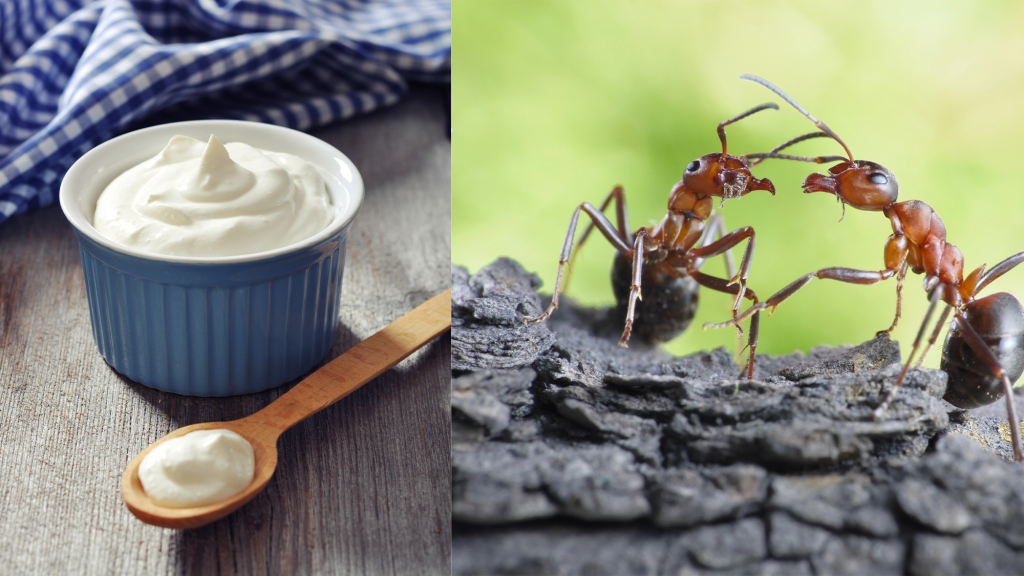Typically, we humans do our best to keep ants out of our kitchens and away from our food. But an old and almost forgotten recipe harnesses the power of these hard-working insects to make yogurt. The recipe, which was once common across Turkey (or Türkiye) and the Balkans, has been recreated in a study published today in the journal iScience.
The bacteria, acids, and enzymes in the insects can jumpstart the fermentation process that turns milk into yogurt. Traditional practices like these can inspire new approaches to food sustainability and add a little creativity to your recipe box–and even be on the menu at Michelin Star-winning restaurants.
“Today’s yogurts are typically made with just two bacterial strains,” study co-author and Technical University of Denmark microbiologist Leonie Jahn said in a statement. “If you look at traditional yogurt, you have much bigger biodiversity, varying based on location, households, and season. That brings more flavors, textures, and personality.”
Slightly tangy, herbaceous, with flavors of grass-fed fat
The red wood ants used in this recipe can be found crawling through the forests of the Turkey and the Balkans (generally considered the countries Albania, Bosnia and Herzegovina, Bulgaria, Croatia, Kosovo, Montenegro, North Macedonia, Romania, Serbia, Slovenia, and some parts of Greece and Türkiye).
To better understand the insect’s role in this one popular recipe, the team visited study co-author and anthropologist Sevgi Mutlu Sirakova’s family village in Bulgaria. Her family and others in the village remember this local yogurt-making tradition.
“We dropped four whole ants into a jar of warm milk by the instruction of Sevgi’s uncle and community members,” recalled study co-author and University of Copenhagen microecologist Veronica Sinotte.
They then tucked the jar into an ant mound to ferment overnight. The next day, the milk had started to thicken and sour.

“That’s an early stage of yogurt, and it tasted that way as well,” said Sinotte.
As for the taste? The ants are removed from the yogurt and the team described the flavor asit as slightly tangy, herbaceous, with some of the flavors of grass-fed fat.
“Giving scientific evidence that these traditions have a deep meaning and purpose, even though they might seem strange or more like a myth, I think that’s really beautiful,” said Jahn.
[ Related: 130-year-old butter bacteria discovered in Danish basement. ]
Lab yogurt
After wrapping up the trip to Bulgaria, the team dissected the science behind the ant yogurt in Denmark. The ants carry both lactic and acetic acid bacteria. Acids produced by both bacteria help coagulate the dairy. The lactic acid bacteria in this yogurt recipe is similar to what is already found in commercial sourdough.
The ants themselves also help make the yogurt, via the formic acid in their natural chemical defense system. According to the team, the formic acid acidifies the milk, affects its texture, and likely creates the right environment for yogurt’s acid-loving microbes to thrive. Enzymes from the ant and the microbes work together to break down milk proteins, turning the milk into yogurt.

The team then compared yogurts made with live, frozen, and dehydrated ants. Only the living ants created the right microbial community, making them the best suited for yogurt making. However, potential yogurt makers should approach the ants with caution to make sure that they are safe to eat. Live ants can harbor parasites, and freezing or dehydrating the bugs can allow harmful bacteria to flourish.
Ant-yogurt on the menu
In the final test to see how this old yogurt recipe could work for contemporary palates, the team partnered with chefs at Alchemist, a two-star Michelin restaurant in Copenhagen, Denmark.
The chefs gave the traditional yogurt a modern twist by serving dishes including yogurt ice-cream sandwiches that were shaped like an ant, mascarpone-like cheeses with a bit of a tang, and cocktails clarified with a milk wash. All of these culinary concoctions were inspired by the ant yogurt and using the insect as a key ingredient.
“I hope people recognize the importance of community and maybe listen a little closer when their grandmother shares a recipe or memory that seems unusual,” said Sinotte. “Learning from these practices and creating space for biocultural heritage in our foodways is important.”


